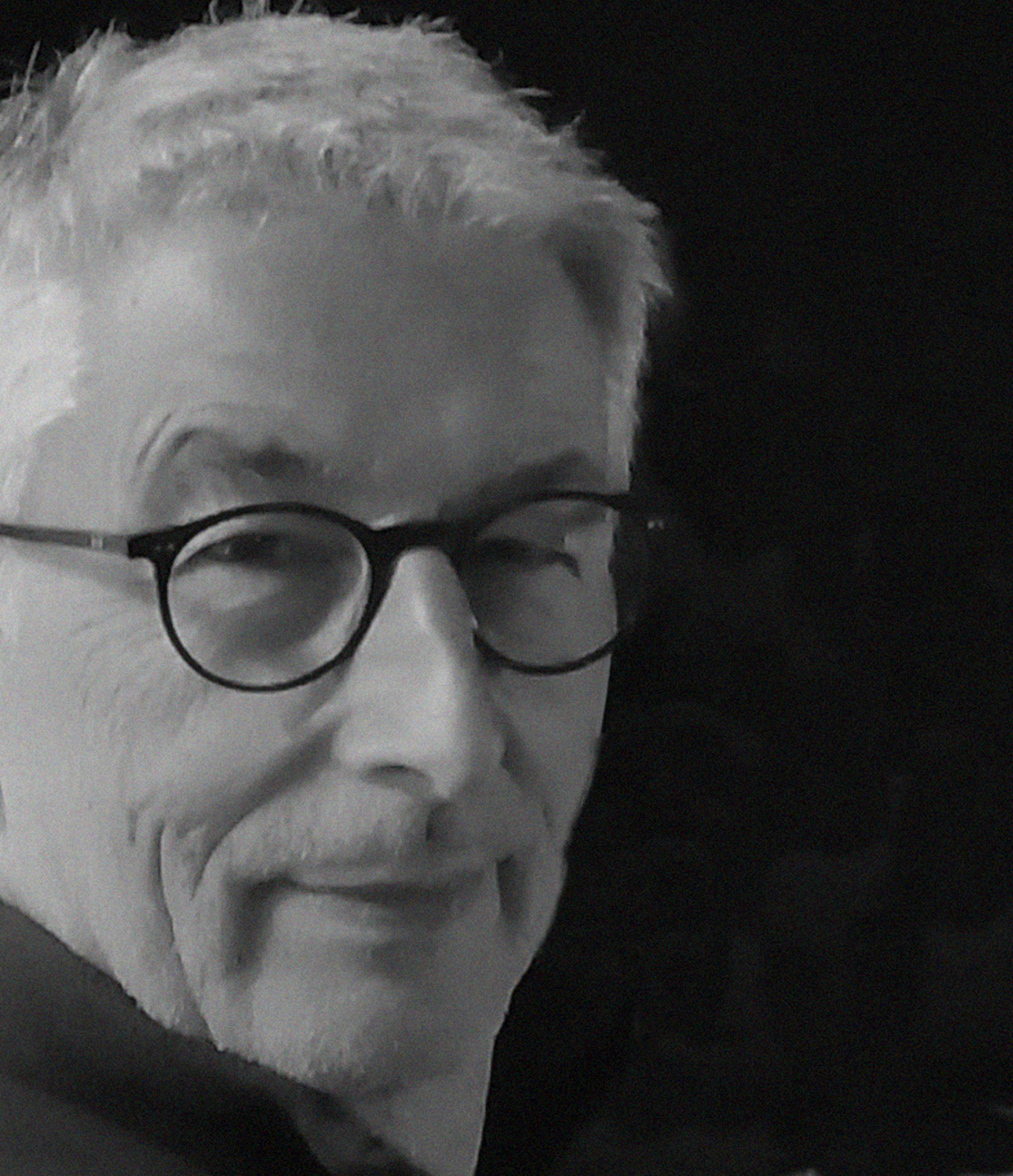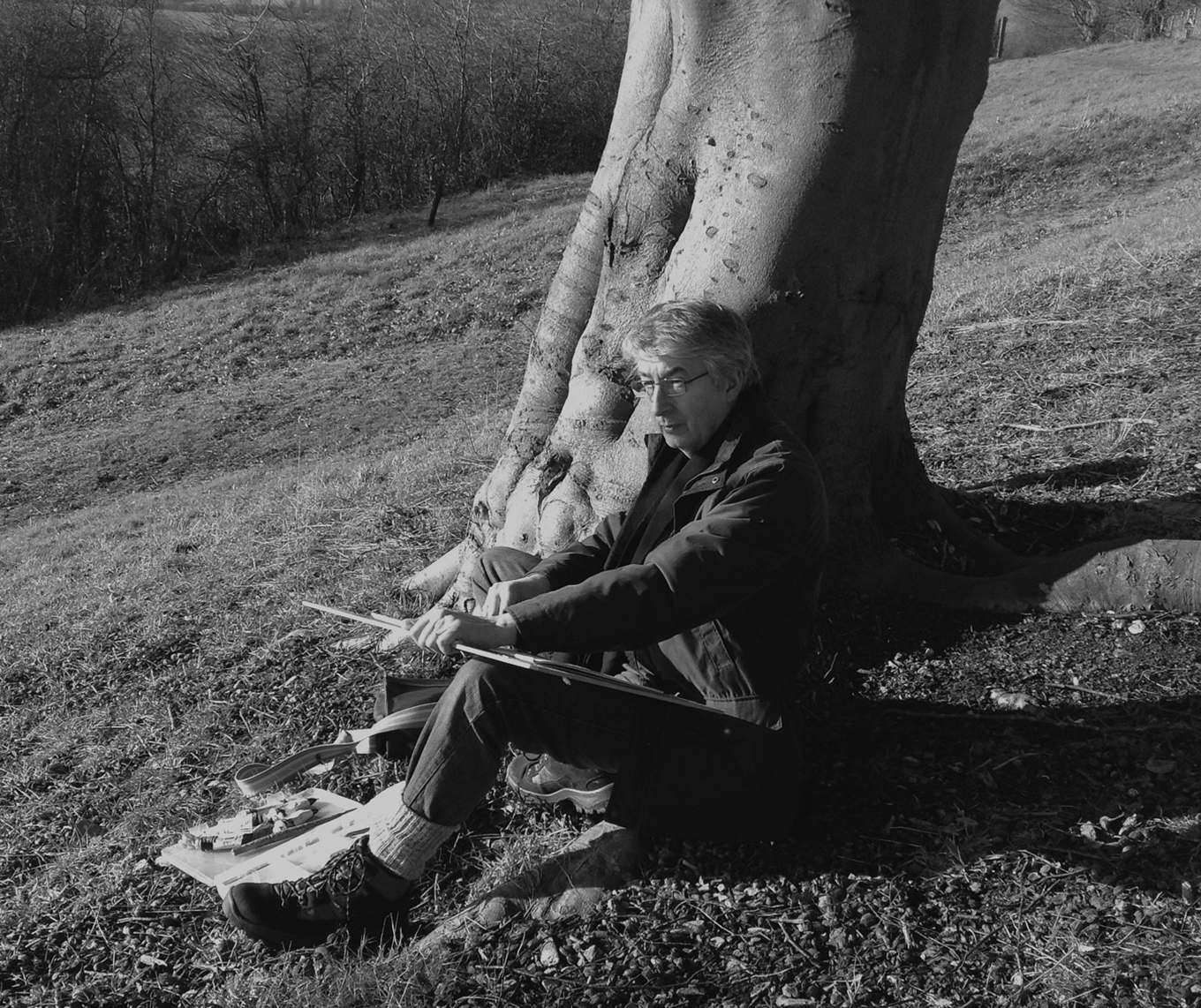Nicholas Herbert (b.1955) is a British artist currently living and working in Aspley Guise, England. From 1974 to 1978, he studied at the Central School of Art & Design, London, and at the Bath Academy of Art & Design, where he graduated with a first class honours degree. During Herbert’s professional career, he has worked across a variety of creative and artistic disciplines, leading to valuable cross-fertilisation from one area of artistic activity to another.
From 1995 to 2005, Herbert made both large-scale abstract paintings on canvas and small landscapes, showing at many galleries in the North of England and participating in a number of Opens. These included the University Gallery Newcastle upon Tyne, Middlesbrough Municipal Art Gallery, Castlegate House Gallery, the Coach House Gallery at Brantwood House and the Lyth Gallery. In 1997, he was commissioned to make two series of large-scale paintings in the Channel Islands. His artworks, including paintings, drawings, and hand-made books, are held in private collections in the UK and abroad.
Between 2012 and 2022, Herbert concentrated on making small, intimate mixed media drawings in series of the English and Italian landscape. In 2022, he returned to lyrical abstraction on a smaller scale, revisiting and reinterpreting the Residual Trace series of artworks first started in 1995, beginning with a series of paintings called Necropolis 2022 to 2023, which subsequently evolved into the current Pneuma corpus 2024 onwards.
Pneuma is Herbert’s third solo show at Alan Kluckow Fine Art, following Silent Spaces (2016) and Lightfall (2019). His drawings have been shown regularly in the gallery’s summer and winter group exhibitions since 2016.
Herbert has had work exhibited at the Royal West of England Academy Open in 2016, 2018, 2020 and 2023, the Royal Society of British Artists 2017 and The Harley Biennial 2017. He also showed with Alan Kluckow Fine Art at the Henley Festival 2019. In 2020, he participated in a three-artist show at the gallery alongside Robbie Wraith and Sally Moore.
In 2022, he was invited by Sean Scully to exhibit in the group show Hidden UK, Hidden Ireland at Flowers Gallery, London, which Sean Scully curated and also showed at. In 2022, he participated in Five Contemporary British Artists at the Stapleford Granary, Cambridge, curated by Alan Kluckow. In 2023, he exhibited drawings in Halifax, St Albans, Bristol and in an exhibition of new acquisitions to the modern and contemporary art collection at Chippenham Museum and Art Gallery. Three works from his Residual Trace - Necropolis series of paintings were shown at Alan Kluckow Fine Art’s recent winter group exhibition 2023-4.
The gallery holds a small stock of recent pieces, viewable on request.

Solo Shows
2024 Alan Kluckow Fine Art - Pneuma
2019 Alan Kluckow Fine Art - Lightfall
2016 Alan Kluckow Fine Art - Silent Spaces
Group Shows
Chippenham Museum - exhibition of new acquisitions modern and contemporary art collection 2023
Alan Kluckow Fine Art - Winter Croup Exhibition 2016, 2017, 2019, 2023, 2025,Alan Kluckow Fine Art - Summer Group Exhibition 2016, 2017, 2018, 2019, 2020, 2021, 2022, 2024
Flowers Gallery, London - Hidden UK, Hidden Ireland, curated by Sean Scully, 2022
Five Contemporary British Artists, The Stapleford Granary, Cambridge 2022
Alan Kluckow Fine Art, Three artist group show with Robbie Wraith and Sally Moore 2020
Alan Kluckow Fine Art - Henley Festival 2019
Open Gallery, Halifax - Summer Croup Exhibition 2023
International Organ Festival Exhibition, St Albans 2023
Open Exhibitions
The Royal West of England Academy Open 2016, 2018, 2020, 2023
The Royal Society of British Artists Open 2017
The Harley Biennial 2017
Museum Collections
The Chippenham Museum Permanent Modern & Contemporary Art Collection

